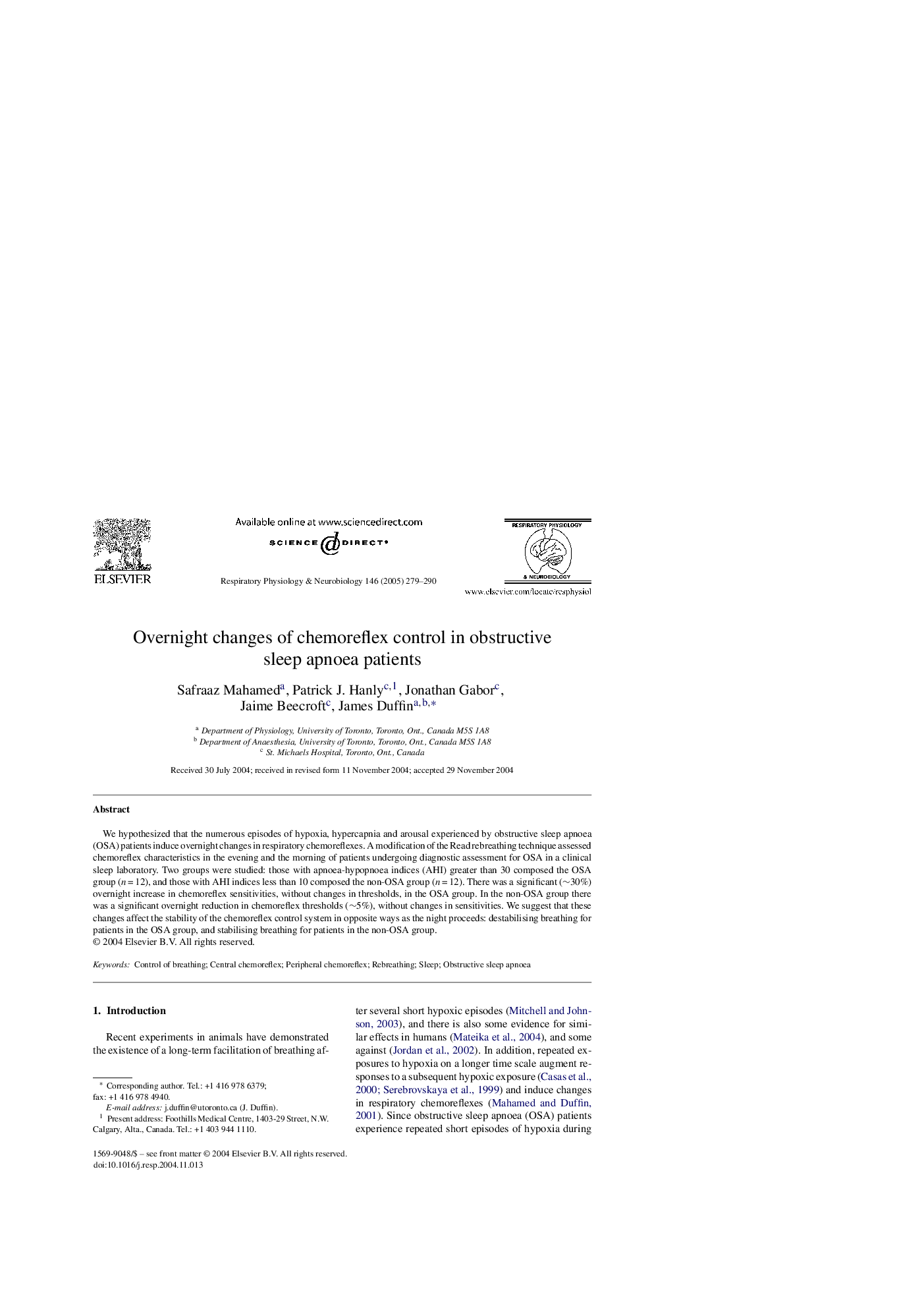| Article ID | Journal | Published Year | Pages | File Type |
|---|---|---|---|---|
| 9152364 | Respiratory Physiology & Neurobiology | 2005 | 12 Pages |
Abstract
We hypothesized that the numerous episodes of hypoxia, hypercapnia and arousal experienced by obstructive sleep apnoea (OSA) patients induce overnight changes in respiratory chemoreflexes. A modification of the Read rebreathing technique assessed chemoreflex characteristics in the evening and the morning of patients undergoing diagnostic assessment for OSA in a clinical sleep laboratory. Two groups were studied: those with apnoea-hypopnoea indices (AHI) greater than 30 composed the OSA group (n = 12), and those with AHI indices less than 10 composed the non-OSA group (n = 12). There was a significant (â¼30%) overnight increase in chemoreflex sensitivities, without changes in thresholds, in the OSA group. In the non-OSA group there was a significant overnight reduction in chemoreflex thresholds (â¼5%), without changes in sensitivities. We suggest that these changes affect the stability of the chemoreflex control system in opposite ways as the night proceeds: destabilising breathing for patients in the OSA group, and stabilising breathing for patients in the non-OSA group.
Keywords
Related Topics
Life Sciences
Biochemistry, Genetics and Molecular Biology
Physiology
Authors
Safraaz Mahamed, Patrick J. Hanly, Jonathan Gabor, Jaime Beecroft, James Duffin,
